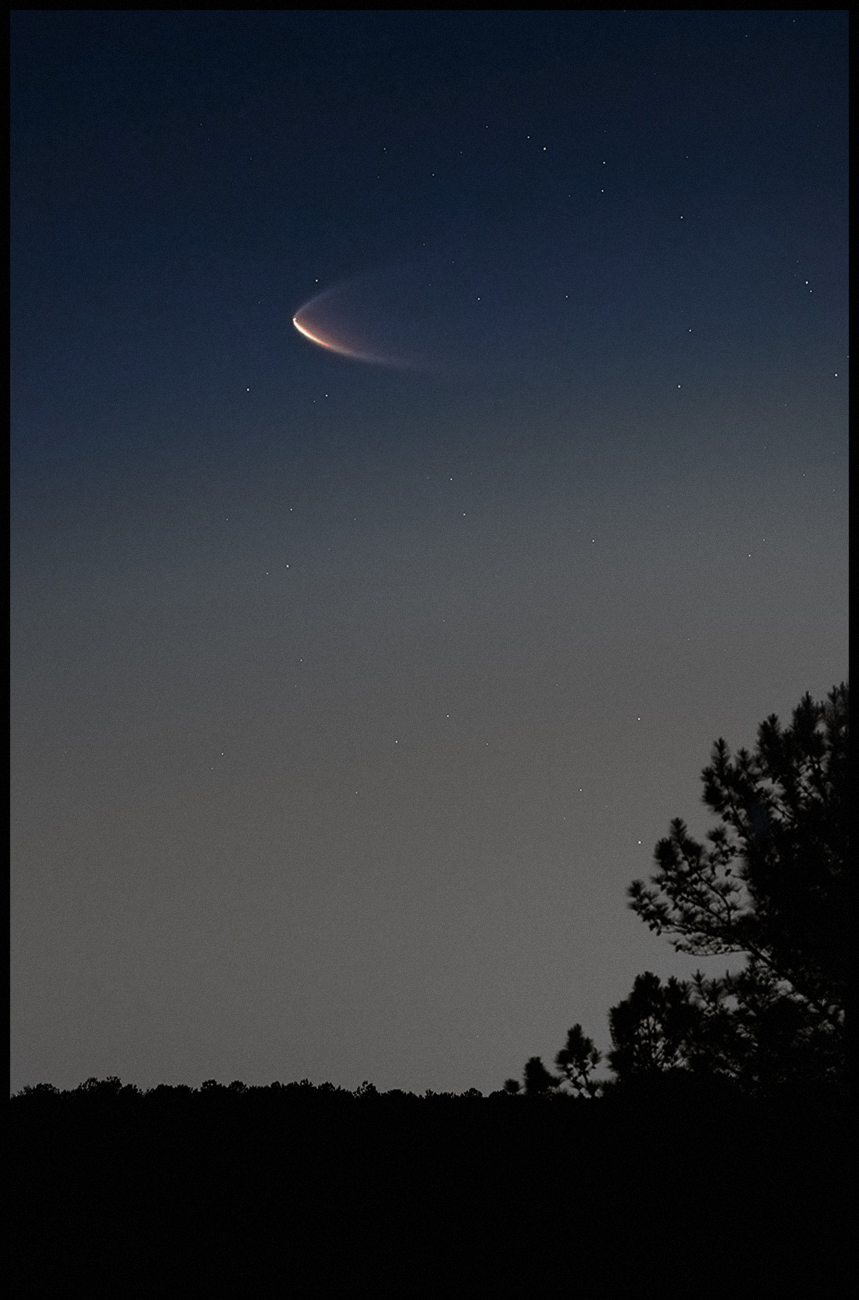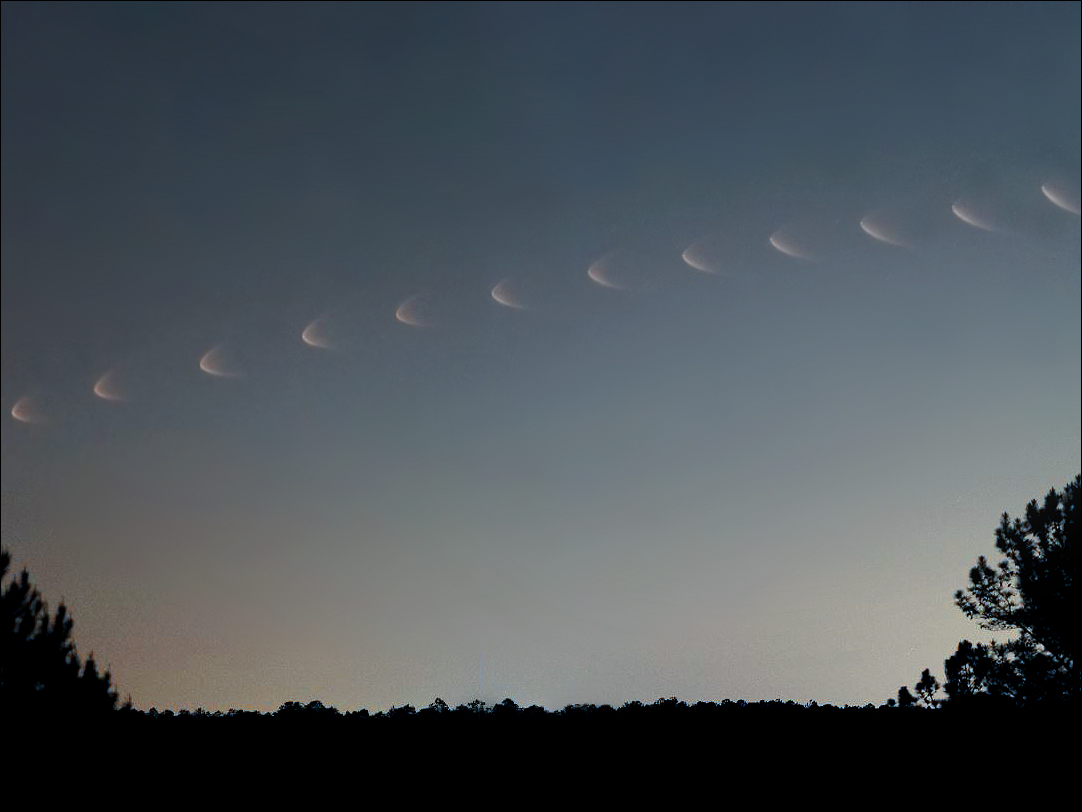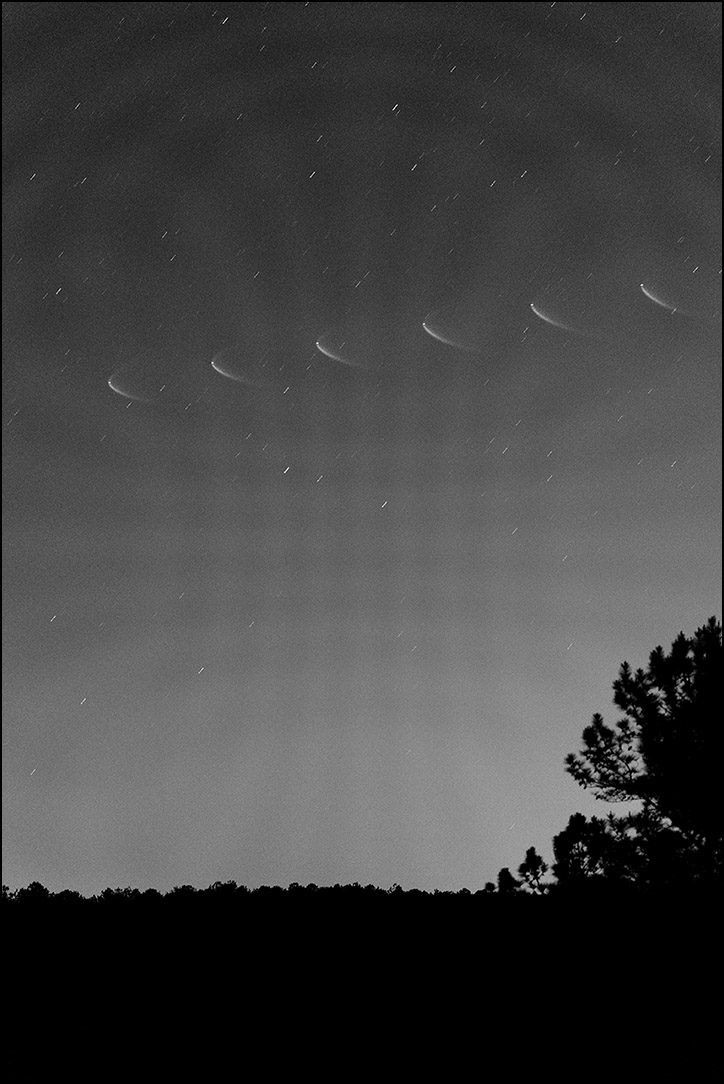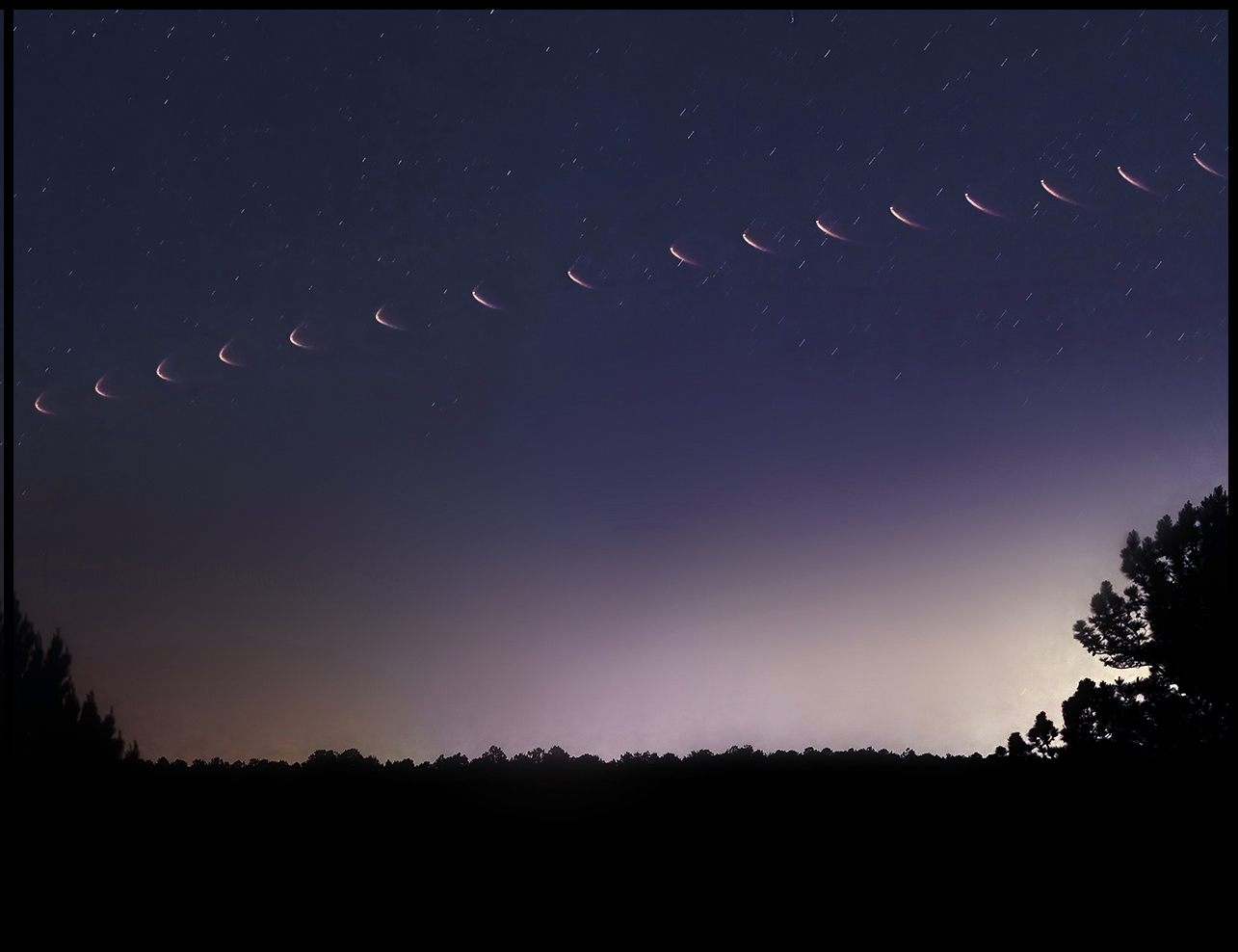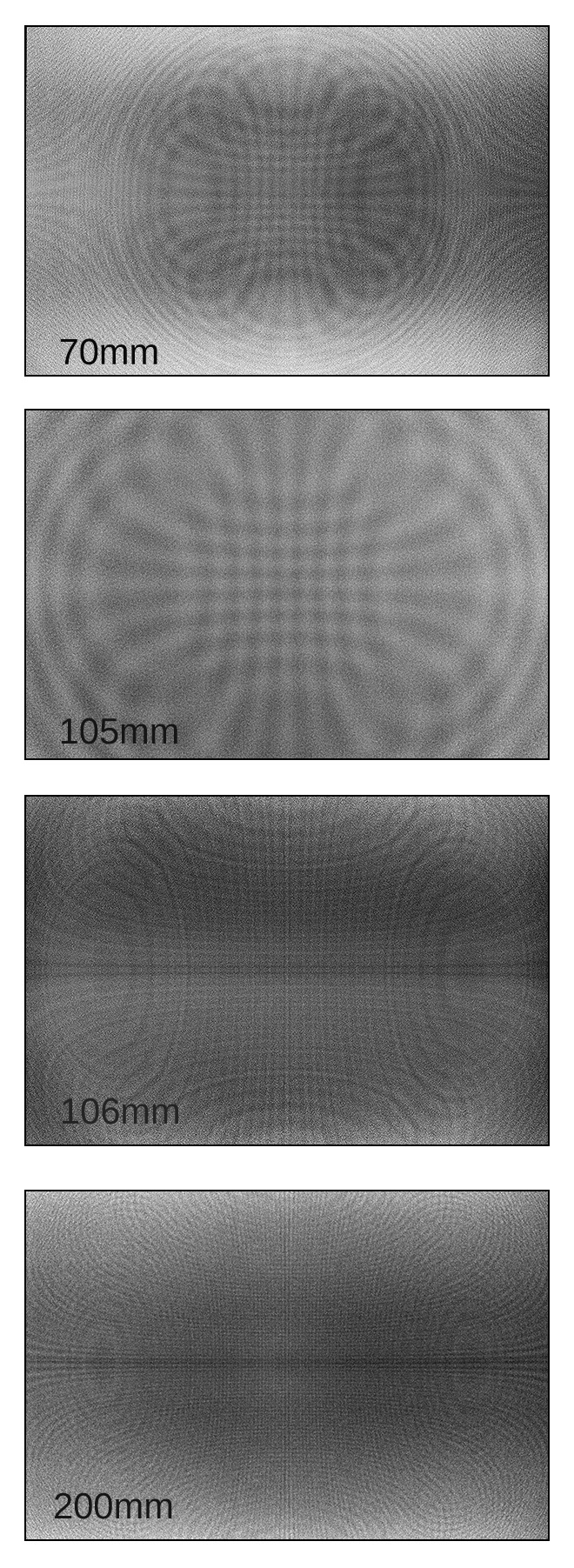The Starry Night, 221 :: home :: |
SpaceX Launch
This is a stack of 40, 1/10 second exposures with the 105mm Sigma at F1.4 at ISO 25,600. I treated the rocket like a comet: I stacked a good set of images aligned on the plume (averaging out all the stars). At 1/10 of a second, the rocket blurs across several pixels; I deconvolved the plume-aligned frame to remove motion blur. Then I aligned a set of images on the stars (averaging out the plume) and then a small set of foreground images just for the lower bits of the frame. I took the mean of all the plume-aligned images and the mean of all the star-aligned images and layered them together (accepting the brightest pixels in each), then combined the result with the foreground images. And presto, there's your rocket in a combined 4-second exposure (40 x 1/10 second) up there sharp and bright and accurately placed among the stars of Aquarius (azimuth 98 degrees). Why, yes! You can click it to make it big.
I need to emphasize: it didn't look anything like this. In fact, I couldn't see a thing without binoculars and in the 14x70 Fujis, it was dim. In the electronic viewfinder of the R6 behind fast glass, it was easy and bright. Other SpaceX launches seen from Rutherford College are here and here. Something about the R6 and the 105 Sigma (or maybe it's just the R6) produces a subtle Moire pattern in my sky photos. It turns up in stacks of high-ISO images, especially when "maximum" blend mode is engaged but also in every mode except "mean" and even there it is detectable. It appears that flats will remove some of this pattern, but perhaps not all. I am bamboozled. So the following stack of every 7th frame was composited in Photoshop, and screen-captured (!) to display here. Any further step to stack the data produces that pattern. There'll be more about that here by and by, especially if I can find a reliable way to avoid it. For now, behold SpaceX heading out to sea. That's a panorama of two vertical 105mm photos. Sure, sure. Click the pic.
Now, let me tell you something odd about that photo. When I tried stacking the files all looked fine until I flattened them in Photoshop. At that point, a truly bizarre Moire pattern showed up. That rocket sequence is a screen capture (!) of two previews in Photoshop stitched into one small image for web consumption. Nothing I tried would produce a clean stack without bizarre artifacts. A similar artifact showed up in some other recent astrophotos (the photo of a solar observatory's gravity-assist Earth flyby, comes to mind), but is less obtrusive in busier, darker fields. Here's the pattern in a stack of this morning's images:
This artifact turns up with the R6 and 105mm Sigma, perhaps not with the 70-200 Canon (I have no idea why and how this can be a lens-specific issue, especially since it doesn't matter whether the Sigma is used at F1.4, F8, or F16). [Flash: it isn't! See below.] It's much worse at high ISO than at low, but it's there all the way down to at least 1600 and probably lower. It seems to be at its worst at ISO 25,600 (noise predominates above that gain, and I didn't look hard at faster ISOs). CRAW may produce a stronger artifact than RAW, but the jury is still out on that. I can't explain its origins, but here's a workflow (finally!) to control or defeat it:
If the pattern remains or returns after increasing contrast, adjusting levels, etc., then mess with curves, levels, whatever it takes in steps 6 and 7. You can try pasting the flat again and working with the finished image, but I've only had partial success with that. The workflow above is based on a flat constructed of 8 RAW images combined Max calibrating an image stack consisting of several CRAW files, also combined Max. Last night, I thought CRAW had a great deal to do with this artifact, but now I doubt that CRAW matters at all. Here's a result from using that workflow:
Check it out big. I mean, why not?
The strange pattern is linked to the focal length of the lens. I'm thinking it has to do with the incidence angle of light on the microlenses of the R6 sensor (does it have those?) or some other physical aspect of the chip. The patterns produced by the 70-200mm Canon at 70, 106, and 200 are very different; the pattern of the Canon at 106 and the Sigma at 105 are vaguely similar (aperture matters?). So it's an R6 thing, and maybe it's a Canon thing (try the 6D). It does flat out (with some difficulty), and it is not an issue when taking the mean of a stack of images which is how stacks are usually used in astro imaging. Why it turns up in stacks other than mean pixel values, especially maximum values, remains a mystery to me. Here are the patterns processed to be conspicuous.
:: top ::
|
© 2021, David Cortner
